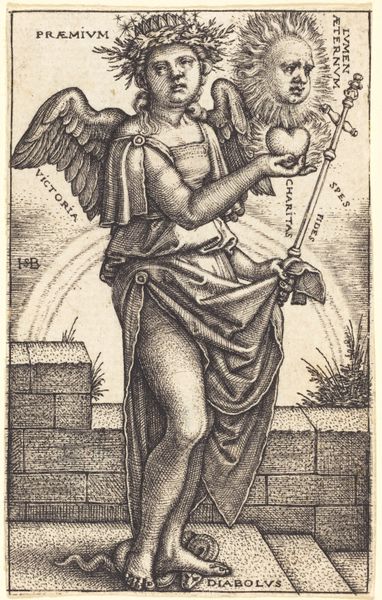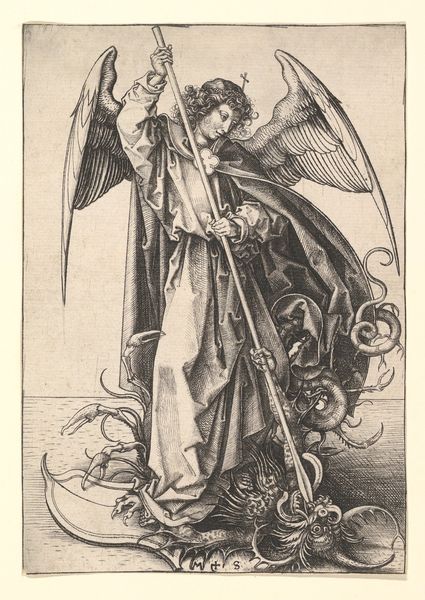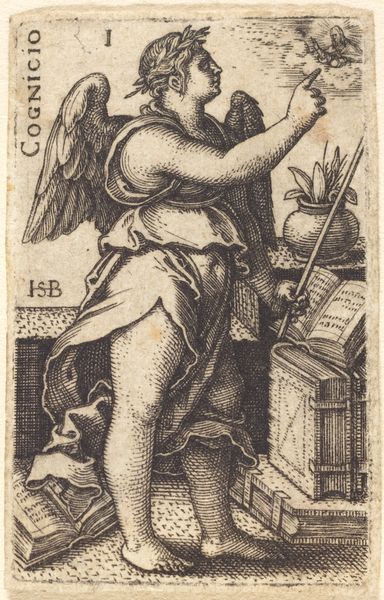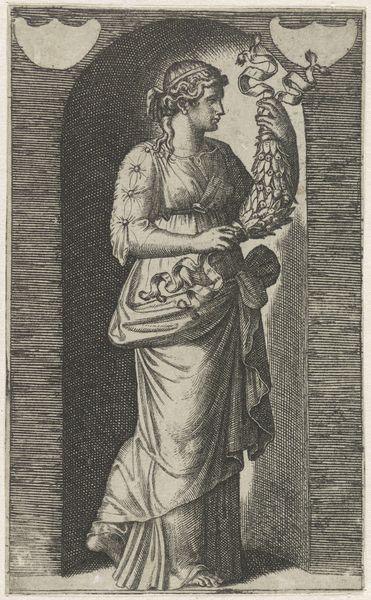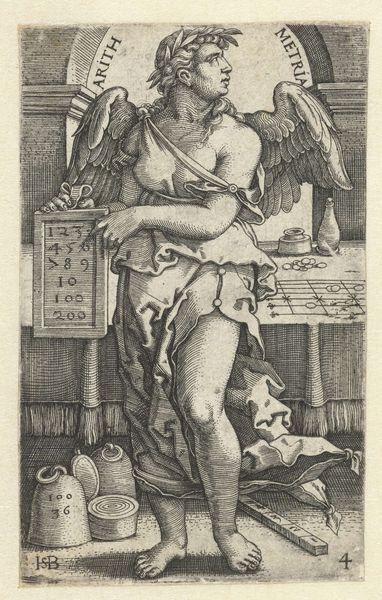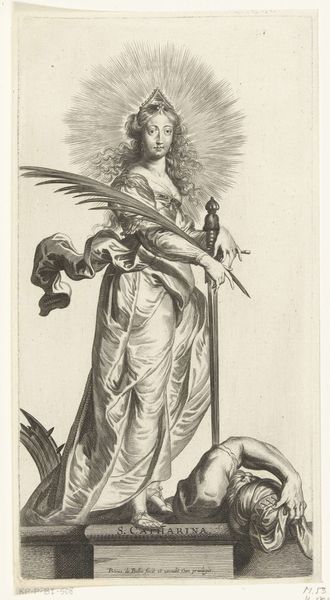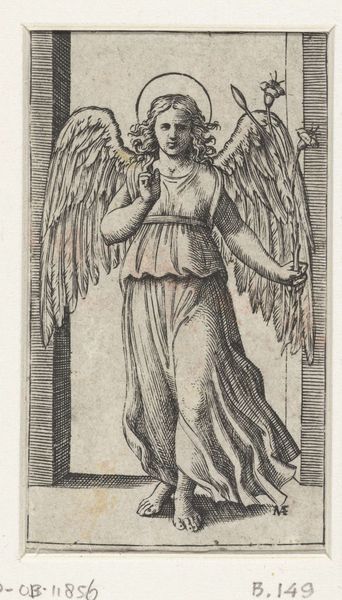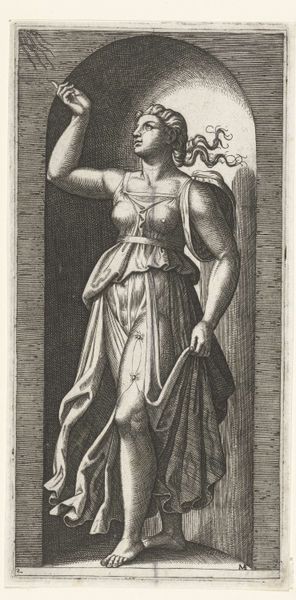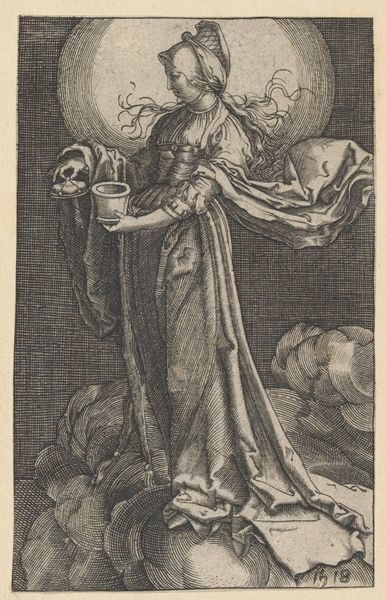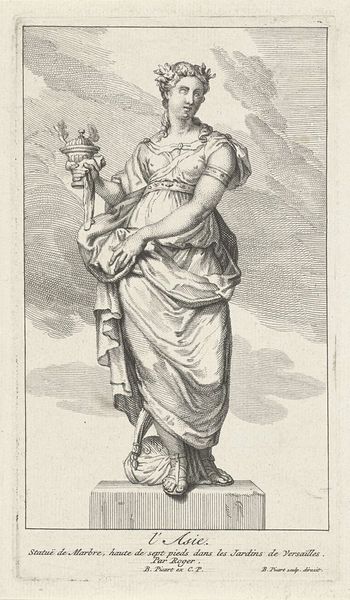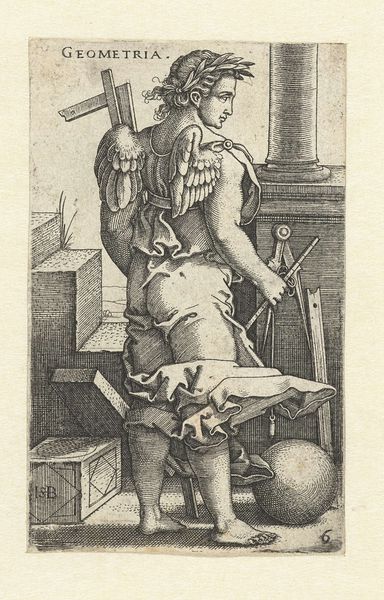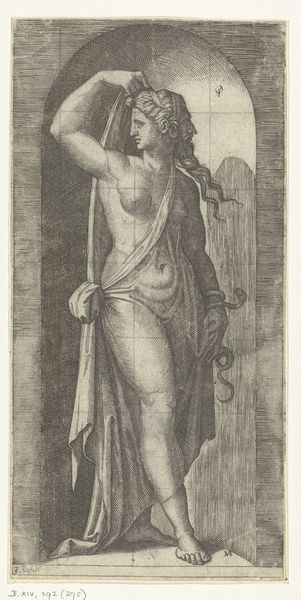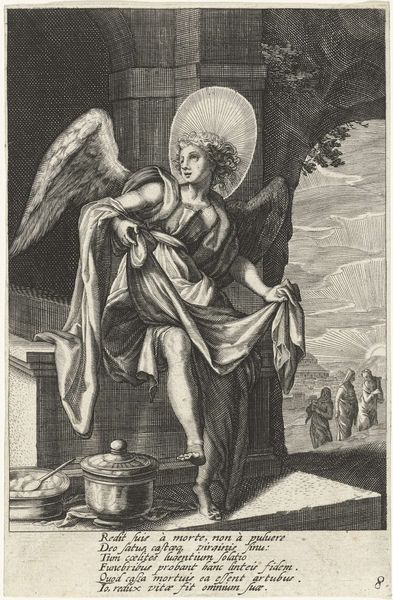
print, engraving
#
allegory
# print
#
figuration
#
northern-renaissance
#
engraving
Dimensions: height 76 mm, width 47 mm
Copyright: Rijks Museum: Open Domain
Curator: This engraving, "Allegory of Christianity," attributed to Sebald Beham, offers a fascinating look at religious symbolism during the Northern Renaissance, somewhere between 1510 and 1550. It's currently held in the Rijksmuseum. Editor: It’s intensely packed! The detail in the engraving really holds your attention; the angel figure exudes this serene yet formidable presence, doesn’t she? It is thoughful but with a strange almost intimidating edge... Curator: Absolutely. The artist masterfully layers potent symbolic imagery. The central winged figure, representing Christian virtues, stands over a serpent labeled “Diabolvs,” a vanquished Satan, while presenting a heart toward the face of god, accompanied by text reading, Lumen Aeternum, “Eternal Light.” Victory, personified, appears to her left as do the inscriptions Fides, Spes and Charitas: faith, hope, charity. She is rewarded. Editor: So, she’s quite literally crushing the patriarchy, then? The figure presents the virtues of faith and the symbolism of victory over earthly struggles—an embodiment of power. In that sense, the artist offers commentary on not just virtue itself, but women wielding authority in society, which historically has been difficult... Curator: The complexity of the iconography truly captures the core values associated with Christendom. Notice how the figure is surrounded by inscriptions relating to core christian tenants. And in the end we see the reward inscribed: “Praemivm”. In other words, those that conquer earthly or devilish tentalions, are granted passage to eternal reward... Editor: Do you see how the figure and even the engraving itself, however well meaning, contributes to narratives of oppression against groups percieved to be non Christian? By branding other religions as satanic or earthly tentalions the engraving serves more as an invitation to intolerance of differences than the promotion of internal well being... Curator: Indeed, and perhaps even the Northern Renaissance was not free of our shared modern anxieties around nationalism and in-group bias...It’s a testament to how symbols are consistently repurposed or even distorted. But nonetheless it reminds us how central to human life, visual forms and iconographic symbolism are as potent psychological levers that impact people’s behaviour... Editor: Absolutely, examining artworks like this forces us to critically analyze their message through the multifaceted layers of gender, religious persecution, and more...it forces one to look to the present, not just the past!
Comments
No comments
Be the first to comment and join the conversation on the ultimate creative platform.
